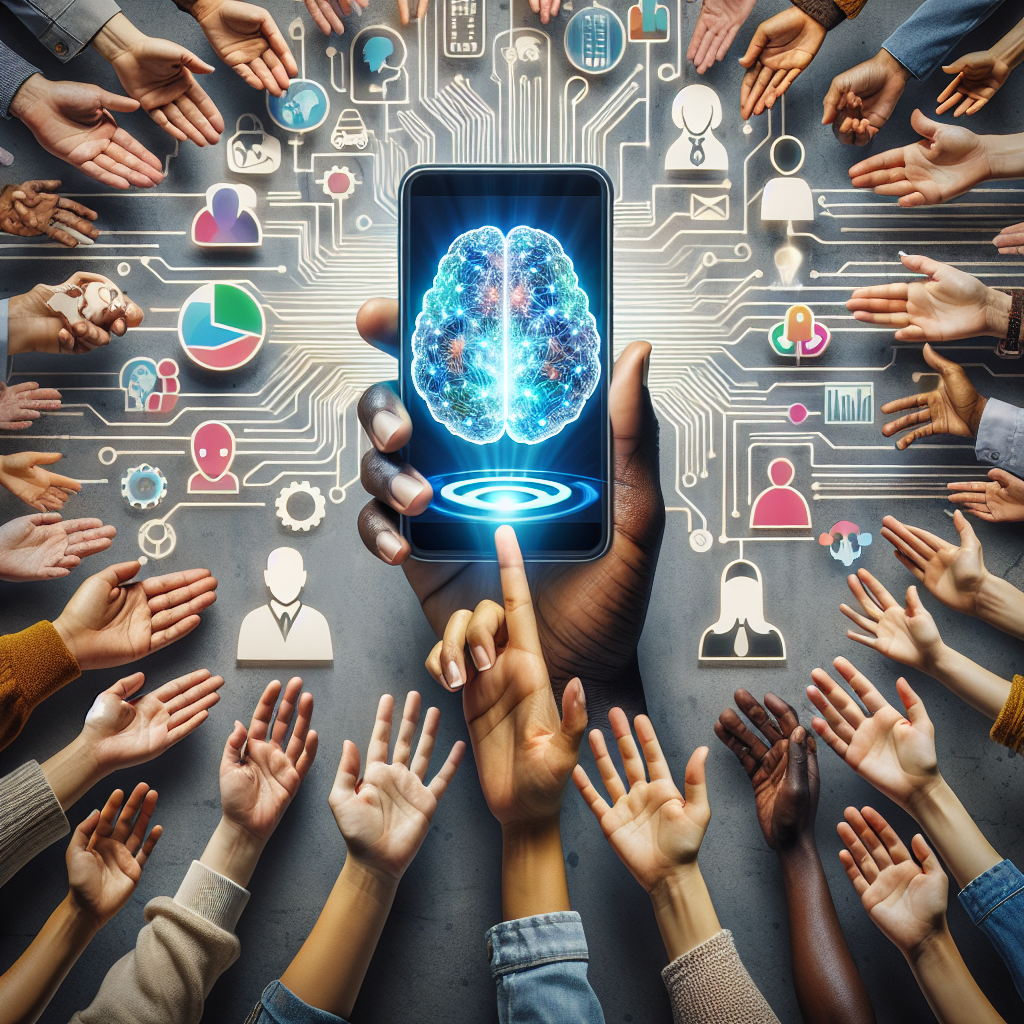Introduction
Recently, the swift evolution of artificial intelligence (AI) has revolutionized our interactions with technology. Today, accessibility stands not merely as a feature, but as a core principle in app development. With a growing recognition of the importance of inclusivity, AI-driven accessible applications are transforming the digital landscape, ensuring technology serves everyone. This article delves into the various contributions of accessible apps toward a more inclusive future.
Understanding Accessibility in Technology
Accessibility involves designing products, devices, services, or environments to be usable by individuals with disabilities. In the technology sphere, it entails creating apps and software that cater to users, regardless of their physical or cognitive abilities. Traditionally, many technologies have overlooked users with disabilities, but recent advancements seek to address these disparities.
The Role of AI in Accessibility
Artificial intelligence significantly enhances app accessibility by providing intuitive solutions to diverse challenges faced by users. Here are several ways AI facilitates this transformation:
-
Voice Recognition and Natural Language Processing (NLP):
- AI-driven voice recognition systems empower users with mobility impairments to control devices, send messages, and engage with applications without using their hands. Natural Language Processing enriches these interactions, making them more conversational and context-sensitive.
-
Image and Video Recognition:
- AI can analyze images and videos to provide descriptions for visually impaired users. Applications like Microsoft’s Seeing AI deliver real-time audio feedback about surroundings, assisting users in navigating effectively.
-
Predictive Text and Autocorrect:
- For those with limited dexterity or cognitive challenges, predictive text algorithms streamline typing and communication. Apps that learn user behavior can make suggestions to expedite text creation and enhance accuracy.
- Personalized User Experiences:
- Machine learning algorithms can modify app interfaces according to individual preferences and requirements. Users can adjust settings for text size, color contrast, or navigation methods, cultivating a user-friendly environment.
Case Studies: Innovations in Accessible Apps
1. Be My Eyes
Be My Eyes connects visually impaired users with sighted volunteers for real-time support via video calls. Utilizing AI, the app effectively matches users with volunteers, enhancing the experience for those who require immediate assistance while fostering community spirit.
2. Speechify
Speechify employs text-to-speech technology to convert written text into spoken words, aiding users with dyslexia and other reading challenges. Its AI capabilities allow it to modify voice speed and intonation, facilitating better comprehension for users.
3. Microsoft’s Seeing AI
As previously mentioned, Microsoft’s Seeing AI app harnesses various AI technologies to describe what the camera observes, identify products, and even read text aloud. This app provides invaluable support for the visually impaired, showcasing how AI can enhance daily living.
Challenges and Considerations
Although significant progress has been made in developing accessible apps, several challenges persist:
-
Awareness and Adoption: Not all developers prioritize accessibility, often due to a lack of awareness or resources. Promoting widespread adoption of inclusive design practices is essential.
-
Funding and Resources: Creating accessible technology may require additional resources. Governments and organizations must support initiatives aimed at improving digital accessibility.
- User Feedback: Ongoing feedback from individuals with disabilities is crucial to ensure that applications meet their needs and are user-friendly.
The Future of Accessible Technology
The outlook for AI-driven accessible technology is encouraging. As machine learning algorithms advance, we can anticipate more personalized and adaptable solutions. Here are some trends that may influence this future:
-
Integration with Smart Devices: As homes become increasingly smart, accessible apps are likely to integrate seamlessly with Internet of Things (IoT) devices, promoting independence for users with disabilities.
-
Augmented and Virtual Reality: AR and VR technologies offer immersive experiences that could revolutionize accessibility. Interactive environments can provide individuals with disabilities new ways to engage with their surroundings.
- Inclusive Design as Standard Practice: As the demand for inclusive applications increases, we may witness a shift in industry standards, where accessibility becomes an essential requirement rather than an afterthought.
Conclusion
AI is leading us toward a future where technology is more accessible than ever. By adopting inclusive design principles and leveraging AI technologies, developers can craft applications that empower all users, regardless of their abilities. As we progress, collaboration between technologists and the disabled community must remain a priority to continue innovating and nurturing an inclusive digital landscape. Through these advancements, we can genuinely aim to make technology accessible to everyone, ensuring it meets the needs of all individuals in society.

